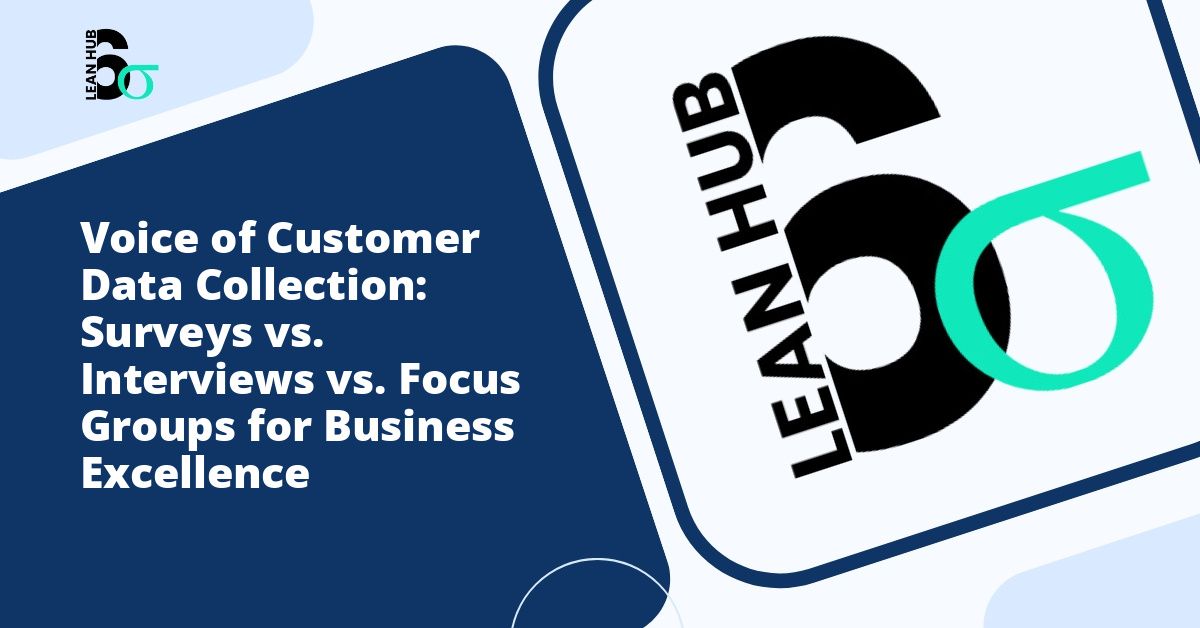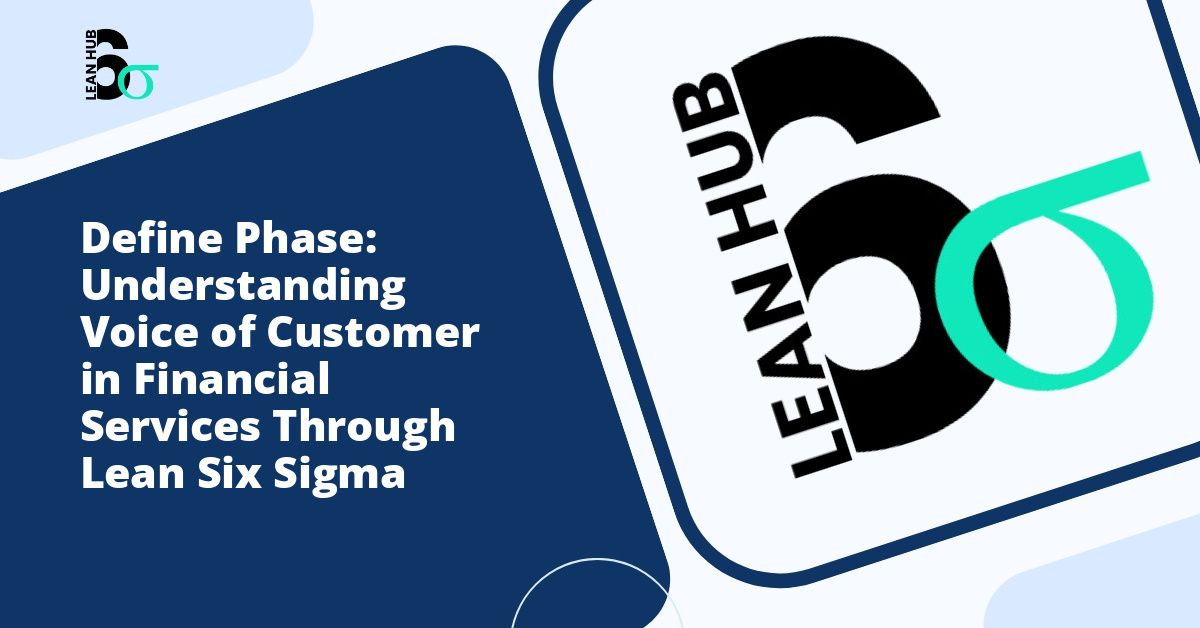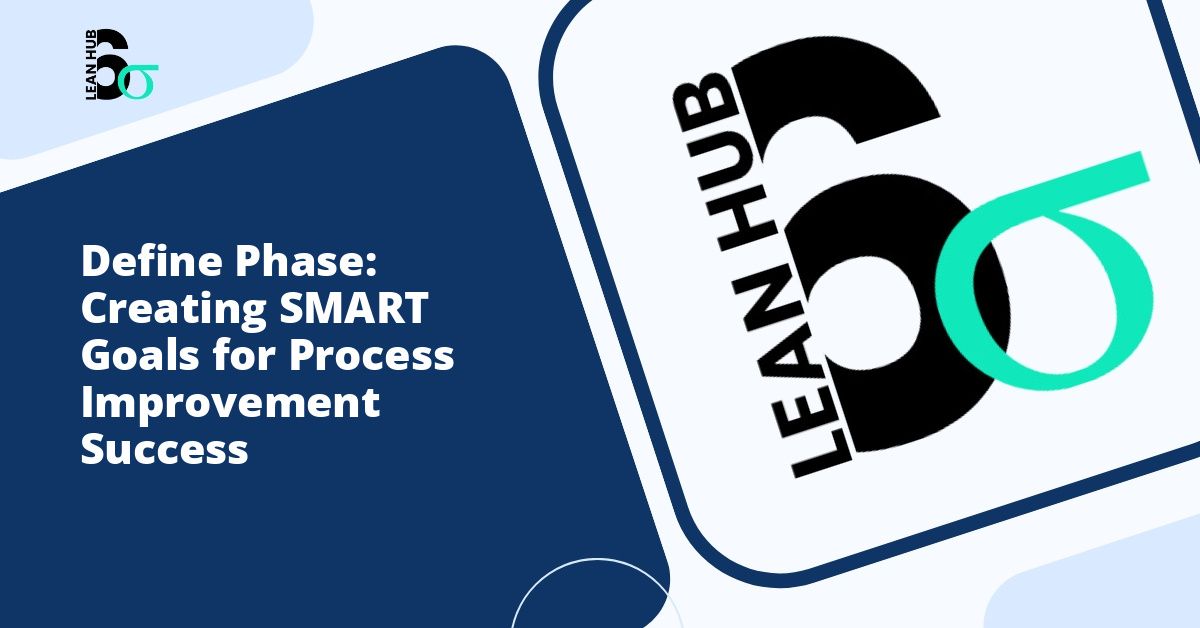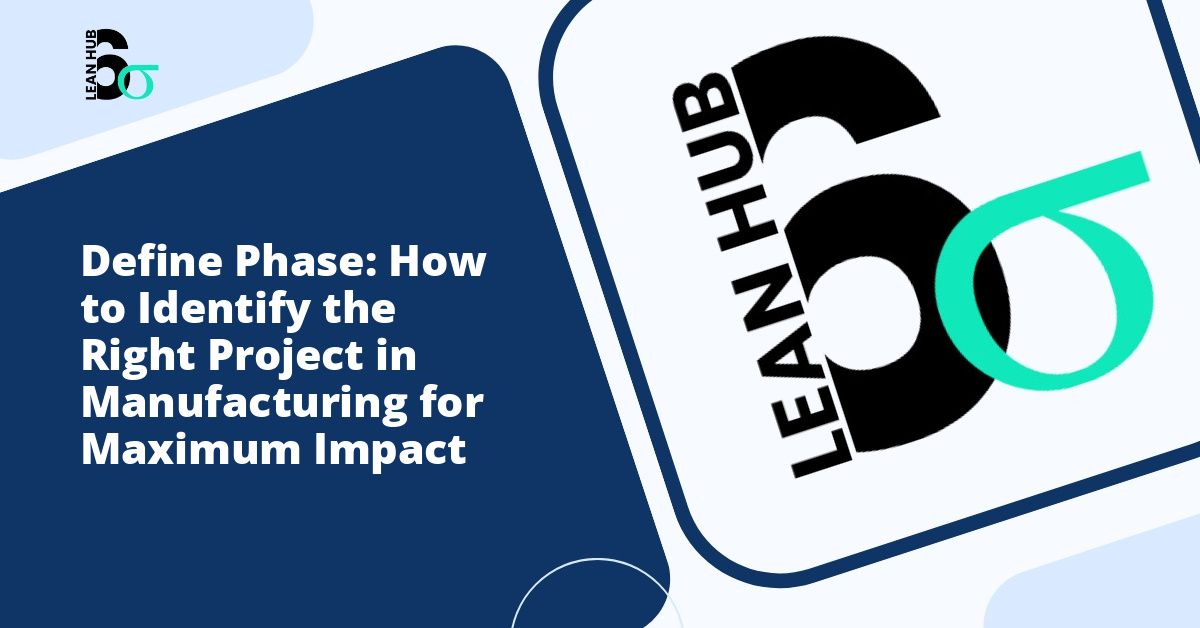Understanding customer needs and expectations forms the foundation of any successful business strategy. In today’s competitive marketplace, organizations must employ systematic approaches to gather, analyze, and act upon customer feedback. Voice of Customer (VoC) data collection stands as a critical component in business improvement methodologies, particularly within the lean six sigma framework, where the recognize phase demands comprehensive understanding of customer requirements.
This comprehensive guide explores three primary methods of collecting Voice of Customer data: surveys, interviews, and focus groups. Each method offers distinct advantages and limitations, and selecting the appropriate approach depends on your specific business objectives, resources, and the depth of insights required. You might also enjoy reading about Kano Model in Six Sigma: How to Prioritize Customer Requirements Effectively.
Understanding Voice of Customer in Business Improvement
Voice of Customer represents the process of capturing customer expectations, preferences, and aversions regarding products or services. Within lean six sigma methodologies, VoC data collection typically occurs during the recognize phase, where organizations identify problems and opportunities for improvement. This initial phase sets the trajectory for entire improvement projects, making accurate customer data collection absolutely essential. You might also enjoy reading about How to Write a Problem Statement for Six Sigma Using the 5W2H Method.
The quality of VoC data directly impacts decision-making processes, product development, service delivery, and ultimately, customer satisfaction. Organizations that systematically collect and analyze customer feedback demonstrate higher retention rates, increased loyalty, and stronger competitive positioning in their respective markets. You might also enjoy reading about SIPOC Analysis Explained: Understanding Your Process at 30,000 Feet.
Method One: Surveys for Voice of Customer Collection
Surveys represent the most widely utilized method for gathering customer feedback at scale. These structured questionnaires can be distributed through various channels including email, websites, mobile applications, or traditional paper formats.
Advantages of Surveys
- Scalability: Surveys allow organizations to reach thousands of customers simultaneously with minimal resource investment, making them ideal for businesses seeking broad market insights.
- Quantifiable Data: The structured nature of surveys produces numerical data that can be easily analyzed statistically, supporting data-driven decision-making processes.
- Cost-Effectiveness: Compared to other VoC methods, surveys require relatively modest financial investment, particularly when using digital distribution platforms.
- Anonymity: Respondents often provide more honest feedback when surveys offer anonymity, reducing social desirability bias.
- Standardization: Every participant receives identical questions, ensuring consistency in data collection and facilitating comparison across different customer segments.
Limitations of Surveys
- Limited Depth: Surveys typically capture surface-level information and may miss underlying motivations or complex customer sentiments.
- Question Bias: Poorly designed questions can lead respondents toward particular answers, compromising data integrity.
- Low Response Rates: Survey fatigue has become increasingly common, with average response rates declining across industries.
- Lack of Context: Without follow-up opportunities, surveys may generate data that requires interpretation without sufficient contextual understanding.
Best Practices for Survey Implementation
To maximize survey effectiveness, organizations should keep questionnaires concise, typically limiting them to 10-15 questions. Questions should be clear, unambiguous, and avoid leading language. Mixing question types, such as multiple-choice, rating scales, and open-ended questions, provides both quantitative and qualitative insights. Timing also matters considerably; sending surveys immediately after customer interactions typically yields higher response rates and more accurate feedback.
Method Two: Customer Interviews for In-Depth Insights
Customer interviews involve one-on-one conversations between a researcher and a customer, allowing for detailed exploration of experiences, opinions, and needs. These interviews can be conducted in person, via telephone, or through video conferencing platforms.
Advantages of Interviews
- Rich, Detailed Information: Interviews enable researchers to explore topics in depth, uncovering nuanced perspectives that surveys cannot capture.
- Flexibility: Interviewers can adapt questions based on responses, pursuing unexpected but relevant topics as they emerge during conversation.
- Clarification Opportunities: Researchers can immediately clarify ambiguous responses or ask follow-up questions to ensure complete understanding.
- Non-Verbal Communication: In-person or video interviews capture body language and emotional reactions, providing additional layers of insight.
- Relationship Building: Personal interaction strengthens customer relationships and demonstrates genuine organizational interest in customer perspectives.
Limitations of Interviews
- Time-Intensive: Conducting, transcribing, and analyzing interviews requires substantial time investment from trained personnel.
- Limited Sample Size: Resource constraints typically restrict interview numbers, potentially limiting the generalizability of findings.
- Interviewer Bias: The interviewer’s behavior, tone, or unconscious cues may influence respondent answers.
- Analysis Complexity: Qualitative data from interviews requires specialized analytical skills and cannot be easily quantified or statistically analyzed.
- Higher Costs: Between personnel time, scheduling coordination, and potential incentive payments, interviews represent significant financial investment.
Best Practices for Interview Implementation
Successful interviews begin with careful participant selection, ensuring representation across key customer segments. Developing a semi-structured interview guide provides direction while maintaining flexibility. Creating comfortable environments where customers feel safe sharing honest opinions proves essential. Recording interviews (with permission) allows researchers to focus on conversation rather than note-taking, though transcription adds additional time and expense to the process.
Method Three: Focus Groups for Collective Insights
Focus groups bring together small groups of customers, typically six to ten participants, for facilitated discussions about products, services, or experiences. These moderated sessions encourage interaction among participants, often generating insights that emerge through group dynamics.
Advantages of Focus Groups
- Group Dynamics: Participants build upon each other’s ideas, potentially revealing insights that would not surface in individual settings.
- Efficient Use of Time: Gathering multiple customers simultaneously provides diverse perspectives within compressed timeframes.
- Observational Opportunities: Facilitators and observers can note group consensus, disagreements, and the strength of various opinions.
- Idea Generation: The collaborative environment often sparks creative thinking and innovative suggestions for improvement.
- Real-Time Validation: Concepts or prototypes can be presented to groups for immediate feedback and iterative refinement.
Limitations of Focus Groups
- Groupthink Risk: Dominant personalities may influence others, potentially suppressing minority opinions or creating false consensus.
- Logistical Challenges: Coordinating schedules, securing appropriate facilities, and managing group dynamics requires considerable planning.
- Moderator Dependency: Success heavily depends on skilled facilitation to manage discussions, ensure balanced participation, and extract meaningful insights.
- Limited Generalizability: Small sample sizes and group influence effects may produce findings that do not represent broader customer populations.
- Social Desirability: Participants may hesitate to express unpopular opinions or criticism in front of peers.
Best Practices for Focus Group Implementation
Recruiting participants with similar characteristics or experiences creates more cohesive discussions. Professional moderators with strong facilitation skills ensure productive sessions where all voices are heard. Comfortable, neutral settings minimize distractions and encourage open dialogue. Recording sessions through audio or video allows for detailed analysis while enabling facilitators to remain present and engaged during discussions.
Selecting the Right Method for Your Organization
Choosing among surveys, interviews, and focus groups depends on multiple factors. Consider your research objectives first. Surveys excel at measuring satisfaction levels across large populations, while interviews provide depth for understanding complex customer journeys, and focus groups generate ideas for new product development.
Resource availability significantly influences method selection. Organizations with limited budgets typically favor surveys, while those requiring nuanced insights must allocate resources for interviews or focus groups. Timeline constraints also matter; surveys deliver rapid results, while interviews and focus groups require extended periods for execution and analysis.
Many successful organizations employ mixed-method approaches, combining techniques to leverage the strengths of each. For example, initial surveys might identify areas requiring deeper exploration, followed by interviews or focus groups to understand the underlying causes of issues identified in survey data.
Integrating VoC Data into Lean Six Sigma Projects
Within lean six sigma frameworks, VoC data collected during the recognize phase directly informs problem definition and project prioritization. This customer-centric approach ensures improvement efforts address genuine customer needs rather than assumptions about what customers want.
Successful integration requires translating customer language into measurable requirements, identifying critical-to-quality characteristics, and establishing baseline metrics. The insights gathered through surveys, interviews, or focus groups should drive project charters, define success criteria, and guide solution development throughout the improvement lifecycle.
Conclusion
Voice of Customer data collection represents a fundamental business practice that directly impacts organizational success. Surveys, interviews, and focus groups each offer valuable approaches to understanding customer perspectives, with distinct advantages and limitations. Rather than viewing these methods as competing alternatives, forward-thinking organizations recognize them as complementary tools within a comprehensive customer intelligence strategy.
By thoughtfully selecting and implementing appropriate VoC collection methods, particularly during critical phases like the recognize phase in lean six sigma projects, organizations position themselves to make informed decisions, develop customer-centric solutions, and build sustainable competitive advantages in increasingly demanding markets.








